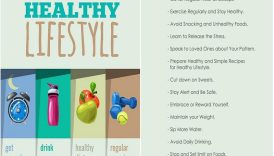Mindful Living: How to Cultivate Health and Happiness

What is Mindful Living?
Mindful living is about embracing the present moment with intention and awareness. It encourages individuals to engage deeply with their thoughts, emotions, and surroundings, leading to greater clarity and focus. Imagine walking in a park and absorbing the smell of flowers or the sound of rustling leaves instead of being caught in thoughts about your to-do list. This practice fosters a holistic connection to oneself and the environment.
- Mindful Living: How to Cultivate Health and Happiness
- What is Mindful Living?
- Benefits of Practicing Mindful Living
- Understanding Mindfulness
- History of Mindfulness
- Science Behind Mindfulness
- Cultivating Mindful Habits
- Mindful Eating
- Mindful Breathing
- Mindful Living for Mental Health
- Reducing Stress and Anxiety
- Improving Emotional Well-being
- Mindful Living for Physical Health
- Enhancing Sleep Quality
- Boosting Immune System
- Mindful Practices for Daily Life
- Tracking Thoughts and Emotions
- Mindful Movement
- Creating a Mindful Environment
- Decluttering Spaces
- Mindful Communication
- Mindful Living and Relationships
- Building Empathy
- Fostering Connection
- Mindfulness in the Digital Age
- Limiting Screen Time
- Practicing Digital Detox
- Mindful Living for Personal Growth
- Setting Intentions
- Cultivating Gratitude
- Mindful Living and Work-Life Balance
- Mindful Time Management
- Setting Boundaries
- Overcoming Challenges in Mindful Living
- Dealing with Distractions
- Managing Resistance
- Mindful Living Resources
- Books and Podcasts
- Online Communities
- Conclusion
- Summary of Key Points
- Steps to Start Living Mindfully
Benefits of Practicing Mindful Living
The benefits of practicing mindful living are profound and far-reaching. Here are a few:
- Reduced Stress: Mindfulness helps manage overwhelming feelings.
- Better Focus: It enhances concentration and productivity.
- Emotional Balance: Mindful awareness promotes healthier emotional responses.
By incorporating mindful living into daily routines, individuals can experience improved mental clarity and emotional well-being.
Understanding Mindfulness
History of Mindfulness
The roots of mindfulness can be traced back to ancient Eastern traditions, particularly Buddhism. It was originally developed as a way to cultivate attention and awareness through meditation practices. Over the years, these principles have evolved and been embraced by many cultures. For instance, what started as meditation for enlightenment has transformed into a popular approach for personal growth and mental health.
Science Behind Mindfulness
In recent decades, scientific research has begun to unravel the mysteries of mindfulness, showing its positive effects on the brain. Studies have demonstrated that mindfulness can lead to:
- Increased gray matter density: Helping with memory and emotional regulation.
- Lower cortisol levels: Reducing stress-related health issues.
This scientific validation underscores how practicing mindfulness can significantly enhance overall well-being.
Cultivating Mindful Habits
Mindful Eating
One effective way to cultivate mindful habits is through mindful eating. This practice encourages savoring each bite by focusing on taste, texture, and aroma. Instead of rushing meals while scrolling through social media, try sitting down at a table, free from distractions. By engaging your senses, you may discover flavors you’ve overlooked! Here’s how to get started:
- Slow down: Chew slowly and thoughtfully.
- Appreciate your food: Express gratitude for the meal.
- Recognize fullness: Stop eating when you feel satisfied.
Mindful Breathing
Another powerful method to enhance mindfulness is mindful breathing. This technique involves directing attention to your breath, which anchors you in the present. Whether sitting quietly or during a stressful moment, deep breathing can bring calmness. To practice mindful breathing:
- Inhale deeply: Allow your belly to expand.
- Exhale slowly: Release all tension.
- Count your breaths: Focus on a count to maintain concentration.
Together, these mindful habits deepen self-awareness and promote a greater sense of peace.
Mindful Living for Mental Health
Reducing Stress and Anxiety
Engaging in mindful living is particularly effective for reducing stress and anxiety. By focusing on the present moment, individuals can break the cycle of worrying about the future or dwelling on the past. For instance, during a hectic day, taking a few minutes to breathe deeply and observe surroundings can alleviate feelings of overwhelm. Here are some tips to help reduce stress:
- Practice gratitude: Each evening, write down three things you’re thankful for.
- Schedule “me-time”: Dedicate moments for yourself throughout the day.
Improving Emotional Well-being
Mindfulness also plays a crucial role in improving emotional well-being. By acknowledging and accepting feelings without judgment, individuals can foster resilience. For example, addressing anger with curiosity instead of resistance opens pathways to understanding personal triggers. To enhance emotional well-being:
- Self-reflect daily: Spend a few minutes journaling about your feelings.
- Engage in self-compassion: Treat yourself with kindness during tough times.
These practices not only reduce stress but also promote a healthier and more balanced emotional life.
Mindful Living for Physical Health
Enhancing Sleep Quality
Mindful living significantly contributes to enhancing sleep quality. Incorporating mindfulness techniques into your bedtime routine helps calm the mind and prepare the body for rest. For example, practicing gentle stretches or focusing on deep breathing can help release tension accumulated throughout the day, signaling your body that it’s time for sleep. Here are some tips for better sleep:
- Establish a bedtime routine: Create a consistent sleep schedule.
- Limit screen time: Disconnect from electronic devices an hour before bed.
Boosting Immune System
Furthermore, engaging in mindfulness can boost the immune system. By reducing stress levels, individuals may experience improved immune responses. For instance, studies have shown that regular mindfulness meditation can lead to a higher production of antibodies. To strengthen your immune system:
- Incorporate mindfulness meditation: Aim for a few minutes daily.
- Practice mindful movement: Engage in activities like yoga or tai chi.
Incorporating these habits not only supports a healthier immune system but also enhances overall physical well-being.
Mindful Practices for Daily Life
Tracking Thoughts and Emotions
Integrating mindful practices into daily life begins with tracking thoughts and emotions. This awareness helps individuals understand their mental patterns and triggers. For example, keeping a journal can be a powerful tool. Each day, take a moment to jot down your feelings, noting what sparked them. Consider these tips:
- Use prompts: Reflect on questions like “What made me happy today?”
- Set aside time: Dedicate a few minutes each evening to review your day.
Mindful Movement
Another enriching practice is mindful movement, which emphasizes awareness while engaging the body. Whether it’s yoga, stretching, or even a simple walk, being present during movement allows for greater connectivity between the mind and body. To incorporate mindful movement:
- Focus on your body: Pay attention to how different parts feel as you move.
- Inhale and exhale intentionally: Synchronize your breath with your movements.
These practices not only enhance everyday experiences but also help foster a deeper connection to oneself.
Creating a Mindful Environment
Decluttering Spaces
Creating a mindful environment begins with decluttering spaces. Physical clutter can lead to mental chaos, making it challenging to focus or feel at peace. Wouldn’t it be refreshing to enter a room where everything has its place? Start small; tackle one area at a time, like a desk or a closet. Here are some quick tips:
- Adopt the “one in, one out” rule: For every new item, let go of an old one.
- Keep only what you love: Surround yourself with items that bring joy.
Mindful Communication
Another aspect of a mindful environment is fostering mindful communication. This means engaging with others in a way that promotes understanding and connection. For example, when having a conversation, focus fully on the person speaking instead of planning your response. To improve communication:
- Practice active listening: Reflect back what you’ve heard to validate feelings.
- Speak with intention: Share thoughts and feelings honestly and kindly.
By decluttering and fostering mindful communication, individuals can create a peaceful and nurturing environment that supports their journey toward mindfulness.
Mindful Living and Relationships
Building Empathy
Practicing mindful living can significantly enhance relationships by fostering empathy. When you approach interactions with a genuine intention to understand others, you create an atmosphere of support and compassion. For instance, during conflicts, taking a moment to pause and ask, “How are they feeling?” can shift your perspective and promote deeper understanding. Here are some ways to build empathy:
- Ask open-ended questions: Encourage others to share their feelings.
- Validate emotions: Let them know their feelings are heard and understood.
Fostering Connection
In addition to empathy, mindfulness helps in fostering true connections with others. By being present in conversations, you demonstrate that you value their thoughts and experiences. Imagine having a meal with friends, fully engaging in laughter and stories without distractions. To strengthen connections:
- Share experiences: Create mindful traditions, like family game nights.
- Practice gratitude: Regularly express appreciation for loved ones.
Through empathy and meaningful connections, mindful living enriches our relationships, creating a supportive and loving environment.
Mindfulness in the Digital Age
Limiting Screen Time
In today’s fast-paced digital age, practicing mindfulness involves intentionally limiting screen time. Excessive use of devices can lead to feelings of overwhelm and distraction. For instance, setting boundaries, such as no screens during meals or an hour before bed, can create space for more meaningful interactions. Consider these strategies:
- Use apps: Track your screen time and set daily limits.
- Create tech-free zones: Designate certain areas in your home for device-free time.
Practicing Digital Detox
Another valuable practice is engaging in a digital detox. This break from technology helps reset both your mind and body. Just a weekend without screens can help you reconnect with yourself and your surroundings. Here are some detox ideas:
- Plan tech-free outings: Enjoy nature or explore new hobbies.
- Replace screen time with reading: Dive into a good book instead.
By limiting screen time and embracing digital detoxes, individuals can cultivate mindfulness and foster deeper connections with the world around them.
Mindful Living for Personal Growth
Setting Intentions
Mindful living serves as a powerful foundation for personal growth, beginning with the practice of setting intentions. This process involves reflecting deeply on what you want to achieve or embody in your life. For instance, dedicating a moment each morning to articulate your focus for the day—be it patience, productivity, or kindness—can guide your actions. To effectively set intentions:
- Write them down: Keeping a journal enhances commitment.
- Visualize your goals: Imagine successfully embodying your intention throughout the day.
Cultivating Gratitude
Cultivating gratitude is another essential aspect of mindful living that promotes personal growth. Taking time to appreciate the small joys in life can shift your mindset, allowing for a more positive outlook. For example, starting or ending your day by listing three things you’re grateful for can significantly improve your emotional well-being. To nurture gratitude:
- Create a gratitude jar: Write notes of appreciation and read them later.
- Share your gratitude: Express thanks to others regularly.
Through setting intentions and cultivating gratitude, individuals can embark on a meaningful journey of personal growth, enhancing overall life satisfaction.
Mindful Living and Work-Life Balance
Mindful Time Management
Achieving a harmonious work-life balance through mindful living starts with effective time management. Instead of rushing through tasks, consider prioritizing them based on your energy levels and importance. For example, tackling challenging projects during peak productivity hours can lead to greater efficiency and less stress. Here are some tips for mindful time management:
- Use the Pomodoro Technique: Work in focused bursts followed by short breaks.
- Reflect weekly: Assess what worked and what didn’t, adjusting plans accordingly.
Setting Boundaries
Equally important is the practice of setting boundaries. Establishing clear limits around your work hours helps prevent burnout and encourages a healthier separation between personal and professional life. For instance, designating certain hours as “off-limits” for work-related communications fosters a stronger connection with family and personal interests. To maintain boundaries:
- Communicate clearly: Let colleagues know your availability.
- Create a dedicated workspace: Physically separate work from home environments.
By implementing mindful time management and setting firm boundaries, individuals can cultivate a more balanced, fulfilling lifestyle.
Overcoming Challenges in Mindful Living
Dealing with Distractions
As individuals embark on their journey of mindful living, distractions can pose significant challenges. Whether it’s the constant ping of notifications or the allure of multitasking, maintaining focus can be tough. One effective strategy is to create a dedicated mindfulness practice space, free from potential distractions. For instance, turning off your phone or using apps that limit interruptions during meditation can help deepen your practice. Here are a few tips to deal with distractions:
- Establish a routine: Predictability can reduce interruptions.
- Practice mindfulness in nature: This can create a peaceful atmosphere to stay grounded.
Managing Resistance
Another common hurdle is managing resistance, which often manifests as a reluctance to fully engage in mindfulness practices. Many may find themselves feeling restless or hesitant, especially when starting out. Acknowledge these feelings; they are entirely normal! To manage resistance:
- Start small: Incorporate short periods of mindfulness into your day.
- Be gentle with yourself: Understand that mindfulness is a practice, not a perfection.
By addressing distractions and navigating resistance, individuals can enhance their mindfulness journey, ultimately leading to more profound growth and awareness.
Mindful Living Resources
Books and Podcasts
Exploring mindful living is easier with the right resources, starting with insightful books and engaging podcasts. Reading various perspectives can deepen your understanding and inspire your practice. For instance, “The Miracle of Mindfulness” by Thich Nhat Hanh provides practical exercises and profound wisdom. For auditory learners, podcasts like “The Mindfulness Meditation Podcast” offer guided sessions perfectly suited for beginners. Here are a few recommendations:
- Books:
- “Wherever You Go, There You Are” by Jon Kabat-Zinn
- “The Gifts of Imperfection” by Brené Brown
- Podcasts:
- “Untangle” for interviews with mindfulness experts
- “10% Happier” with Dan Harris
Online Communities
Connecting with others is equally important, and online communities can be fantastic support systems. Platforms like Facebook and Reddit host groups focused on mindful living where you can share experiences, ask questions, and find encouragement. Consider these platforms:
- Reddit: Look for r/Mindfulness for discussions and tips.
- Facebook Groups: Search for mindful living communities tailored to your interests.
By leveraging books, podcasts, and online communities, individuals can enhance their mindfulness journey, fostering both growth and connection.
Conclusion
Summary of Key Points
In this exploration of mindful living, we’ve seen how integrating mindfulness into daily life can lead to profound transformations. From enhancing mental and physical health to fostering better relationships and work-life balance, the benefits are extensive. Remember, it’s about being present, cultivating gratitude, and engaging deeply with yourself and others.
Steps to Start Living Mindfully
Ready to embark on this journey? Here are a few simple steps to start living mindfully:
- Set clear intentions: Define what mindfulness means for you.
- Practice daily: Even five minutes of meditation can make a difference.
- Limit distractions: Create a tech-free zone at home.
By taking these initial steps, you can begin to weave mindfulness into the fabric of your life, enriching your experiences and interactions along the way.




